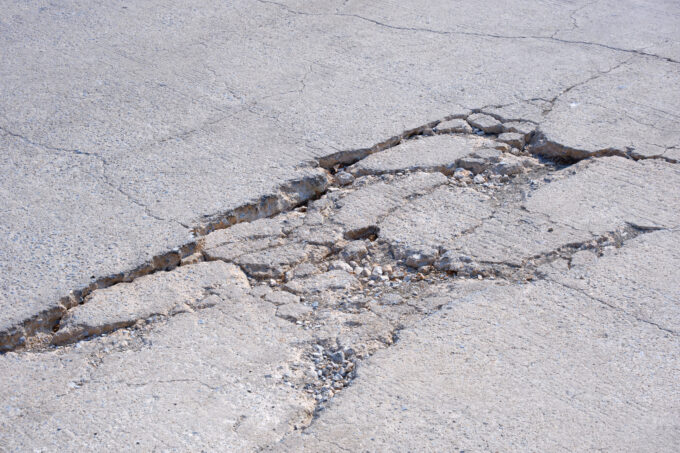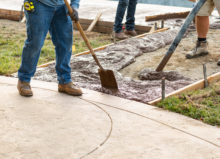How Seasonal Changes Affect Your Concrete Surfaces

Living in the Midwest has its perks, like experiencing all four seasons. Most people on the West Coast can only dream about snow and yellow-auburn leaves, but there is one downside to this experience—temperature fluctuations. While summer and winter can be pretty stable in terms of temperature, the spring and fall can be particularly unpredictable, sometimes with morning temperatures in the 30s and afternoon temperatures in the mid-80s.
Although these swings can be unpleasant, most homeowners don’t realize that these fluctuations can exacerbate damage in concrete, leading to a shorter lifespan.
Spring & Fall: Fluctuating Temperatures & Moisture
Temperature fluctuations in the spring and fall often result in thermal cycling and moisture movement. Thermal cycling is when the concrete is repeatedly expanded (in the heat) and contracted (in the cold). This repetition weakens the concrete’s internal structure, leading to microcracks and, eventually, larger fractures. The rapid temperature swings also create stresses as water within the concrete changes from liquid to vapor to ice, which can make cracking or delamination (layer separation) worse. This is particularly a problem in the spring when there is a ton of rain.
Summer: High Temperatures
Fluctuating temperatures aren’t the only issue Michigan homeowners have to protect their concrete from—the extreme temperatures of the summer and winter are also problems. Yes, Michigan doesn’t experience summers as intense as someone in Arizona or Texas, but even temperatures in the high 90s can damage concrete.
Concrete expands when it’s exposed to high temperatures. If expansion joints are missing, the pressure from this expansion can cause the concrete to crack or buckle. The high heat also causes water to evaporate out of the concrete faster, leading to drying shrinkage. And, if the concrete isn’t cured properly, the end result is often surface cracks.
Winter: Ice & Cold
While the cold doesn’t have much physical impact on the concrete (unless the concrete doesn’t have expansion joints), it only becomes a problem when there is ice or water. Concrete is porous, so it absorbs water. If there is water in the concrete when the temperatures drop, that water will expand by about 9% as it turns into ice, which creates internal pressure that can, over time, cause cracks, spalling (surface flaking), or delamination if those freeze-thaw cycles are repeated.
The most significant damage that can be done to concrete during the winter is using deicing chemicals. Most store-bought deicing chemicals and salts are not safe for use on concrete. These salts absorb moisture, increasing freeze-thaw damage, react chemically with the concrete, causing it to scale or peel, and can lead to abrasion damage, depending on the amount of traffic the concrete surface receives.
Preventative Measures
Although your concrete can become damaged as the seasons change, the good news is that it’s easy to prevent by following these maintenance practices:
- Seal your concrete surfaces every few years (essentially, whenever you notice the surface is dull or water is being absorbed into the concrete, usually sealers will wear off in a couple of years). Sealing will help prevent water infiltration and lessen damage from the freeze-thaw cycle. It can also protect against deicing agents.
- Ensure there is proper drainage in your yard. You want water to be directed away from the concrete.
- If you have control over the deicing agents used on your property, you’ll want to avoid using rock salt or any deicing agents that contain ammonium nitrate or ammonium sulfate, which can erode concrete. Instead, use calcium magnesium acetate or sand.
- If you don’t have control over the deicing agents, make sure to wash or sweep away the residue when it’s no longer needed.
- Seal any cracks you notice.
- Allow any new concrete to fully cure before walking or putting outdoor furniture on it.
Request Maintenance Services Today
G&G Concrete & Construction specializes in installing, repairing, and maintaining concrete walkways, driveways, patios, and other structures for homeowners across Macomb, Michigan.
If you’ve noticed seasonal damage to your concrete or you’re just looking to prevent this type of damage, you can trust us for crack repairs, surface patching, resurfacing, joint reconstruction, overlaying, sealing, drainage solutions, and more.
Please contact us today, and let us know how we can help you.







